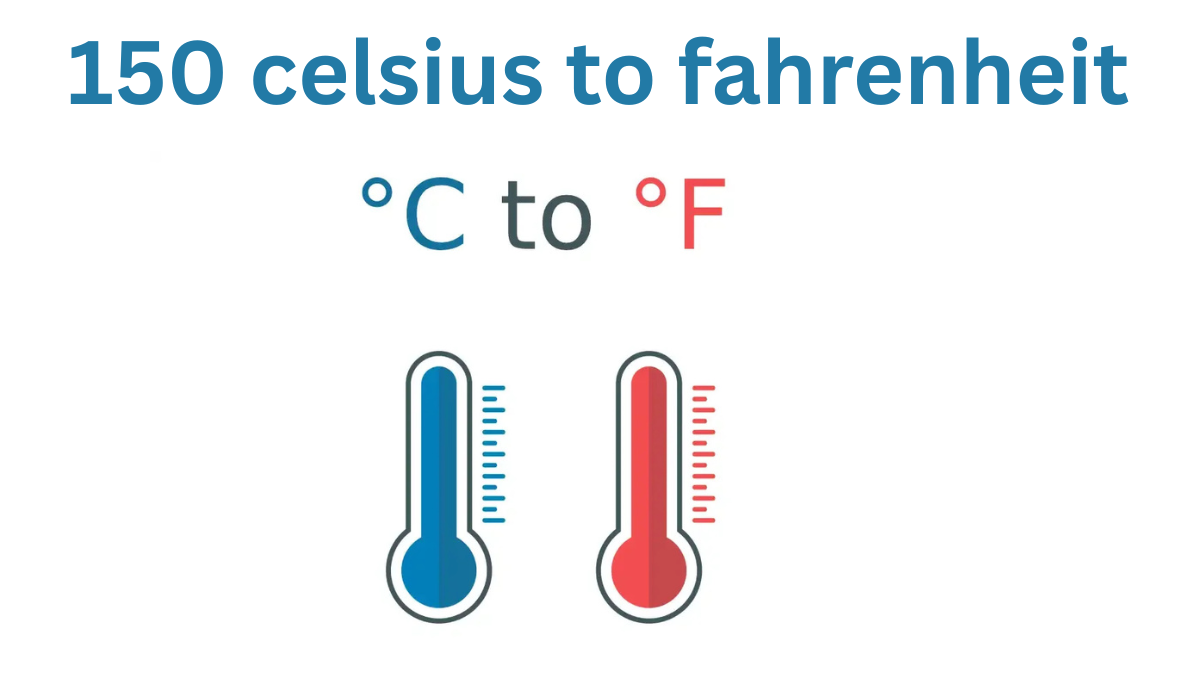Temperature conversions can seem confusing at first, but they’re incredibly useful in everyday life, from cooking and baking to scientific experiments and weather observations. If you’ve found yourself pondering, “How do I convert 150 Celsius to Fahrenheit?” you’re in the right place.
This guide aims to demystify the temperature conversion process, not just for 150°C to °F, but for other numbers as well, with tips, examples, and insights that can help you make accurate calculations every time.
Understanding Celsius and Fahrenheit Scales
Before jumping into the conversion process, it’s important to understand the difference between the Celsius and Fahrenheit temperature scales.
Celsius (°C)
The Celsius scale, also known as the centigrade scale, is commonly used around the world, especially in scientific communities and most countries outside the U.S. It sets the freezing point of water at 0°C and the boiling point at 100°C.
Fahrenheit (°F)
The Fahrenheit scale is primarily used in the United States for day-to-day temperature measurements like weather forecasts. On this scale, water freezes at 32°F and boils at 212°F.
The difference between these scales might seem like a headache, but the formulas to convert between them are thankfully straightforward.
Step-by-Step Conversion Process for 150°C to °F
Now, here’s what you’ve been waiting for. Converting Celsius to Fahrenheit can be done using a simple formula:
Formula:
°F = (°C × 9/5) + 32
Applying the Formula:
- Start with your Celsius temperature (150°C in this case).
- Multiply it by 9/5:
150 × 9/5 = 270
- Add 32 to the result:
270 + 32 = 302
Answer:
150°C is equal to 302°F.
It’s that simple! You can now confidently say that 150 celsius to fahrenheit is 302°F.
Real-World Applications of Temperature Conversion
Knowing how to convert between Celsius and Fahrenheit isn’t just for science class. Here are some common scenarios where this knowledge comes in handy:
- Cooking and Baking: Many recipes use Celsius for oven temperatures. If you’re following an international recipe, you’ll often need to convert it to Fahrenheit for your oven settings.
- Traveling Abroad: If you’re traveling to or from the U.S., weather forecasts might be in an unfamiliar temperature scale, requiring conversions for better understanding.
- Academic Purposes: Science experiments and classroom discussions often require switching between the two scales, especially in global collaborations.
Learning these conversions opens the door to more seamless interactions across various fields and situations.
Tips for Accurate Temperature Conversions
Here are some quick tips to help you get precise results when converting temperatures:
- Memorize Key Points: Keep in mind key conversions like freezing and boiling points of water (0°C = 32°F, 100°C = 212°F). These can serve as quick reference points.
- Use a Calculator or Online Tool: While the formula is simple, a calculator can ensure accuracy, especially when working with non-integer temperatures.
- Dual-Scale Thermometers: Invest in a thermometer that displays both Celsius and Fahrenheit for instant readings.
By keeping these tips in mind, you’ll minimize any potential errors when switching between the scales.
Common Mistakes to Avoid When Converting Temperatures
Even simple calculations can trip you up if you’re not careful. Here are common mistakes to watch out for:
- Forgetting to Add 32: This is a frequent oversight when using the formula. Always remember to include the +32 step for accurate Fahrenheit values.
- Multiplying Incorrectly: Watch out for fractional errors when multiplying by 9/5. Double-check your math.
- Rounding Too Early: Avoid rounding intermediary steps, as this can lead to less accurate final results. Only round at the end.
Staying mindful of these mistakes can save you from a lot of unnecessary confusion.
Other Temperature Conversions
Want to try converting other temperatures? Here are a few examples to guide you:
- 0°C to °F:
(0 × 9/5) + 32 = 32°F
- 100°C to °F:
(100 × 9/5) + 32 = 212°F
- 37°C to °F (body temperature):
(37 × 9/5) + 32 = 98.6°F
For colder temperatures:
- -10°C to °F:
(-10 × 9/5) + 32 = 14°F
By practicing these examples, you’ll develop a better grasp of temperature conversions.
Master Temperature Conversions with Confidence
Whether you’re adjusting your oven for a recipe, understanding a weather forecast during international travel, or deep-diving into scientific experiments, knowing how to convert temperatures like 150 celsius to fahrenheit is a valuable skill. Use the simple formula °F = (°C × 9/5) + 32, and you’ll never feel unsure.
For convenience, you can bookmark this guide or use online converters and tools for quick results. With accuracy and practice, you’ll confidently handle temperature conversions in no time.
You May Also Like:





